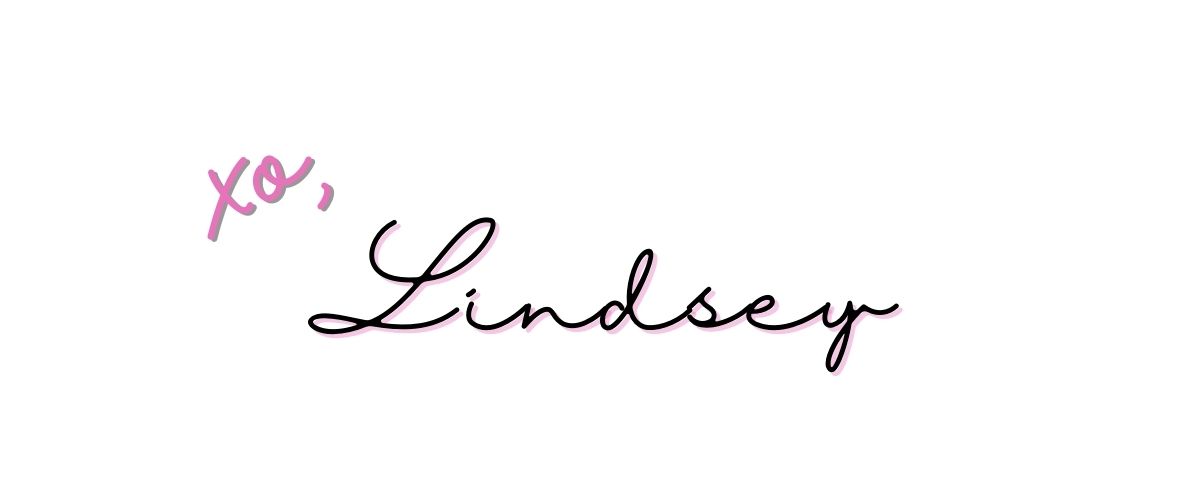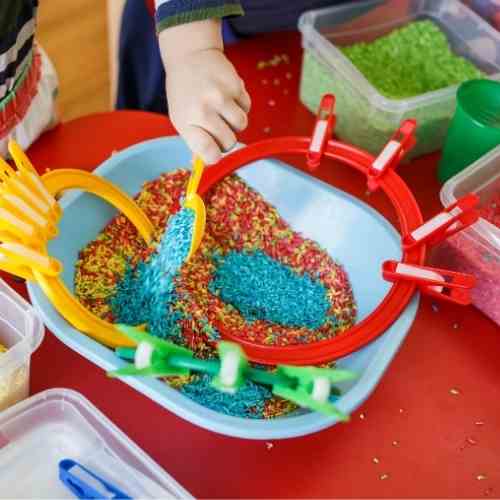Sensory play is a very important part of child development. Creating sensory bins, bags and bottles is a great way to engage your child in a learn through play activity.
Every time it rains, my kids want to go outside and splash in puddles or play in the mud.
Whenever we go to the playground, they want to scoop, dump and throw wood chips.
When we make waffles, she wants to dump the ingredients, stir the batter, and of course, give it a taste.
Does this sound like your child, too? Of course it does! Children and adults have a need for sensory stimulation. And all of the things I described above are how my kids seek sensory stimulation in their day-to-day activities.
We love making sensory bins in our house. They are so simple to make and will meet your child’s needs for sensory stimulation.
Not only do sensory bins encourage my kids to engage in independent play, it also gives me a chance to get things done and engage in some much-needed self care.
While it may seem counterproductive (sensory bins can get messy!), it gives me a chance to make phone calls, catch up on emails, or fold laundry.
And the research supports them! Sensory play is crucial for child development.
This post contains affiliate links for your convenience. That means if a purchase is made using the links on this site, I may earn a small commission at no additional cost to you.
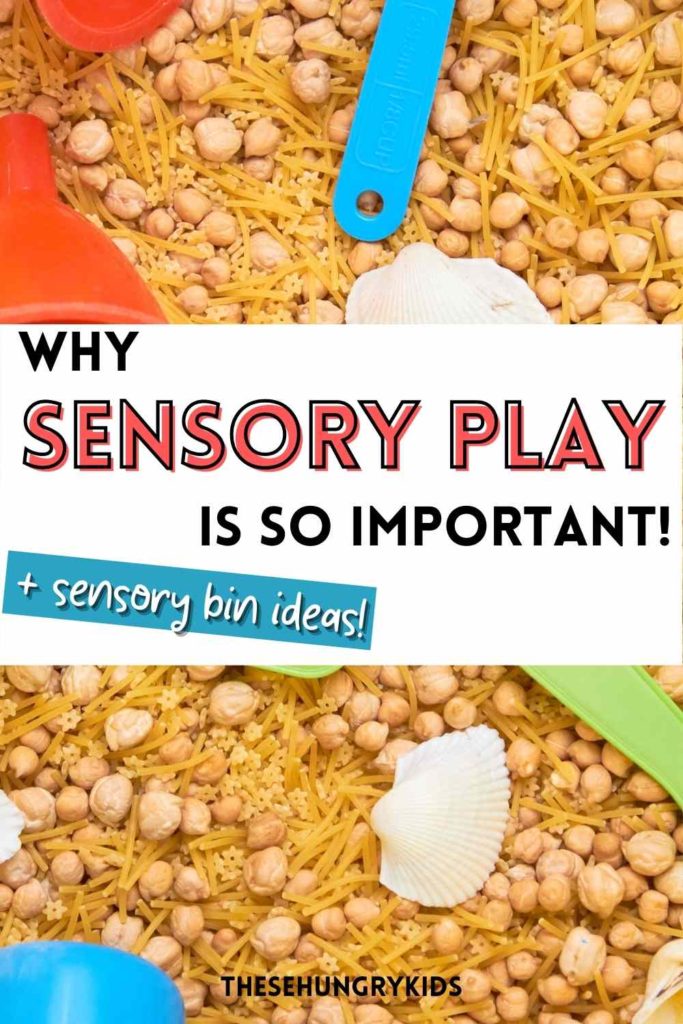
The science behind sensory play
When you think of your senses, you probably think of the five senses: taste, smell, touch, sight and hearing.
But what about the other senses?
Yes, you heard me!
There’s a lot of debate to how many senses we actually have. But the point is: there are many different senses that sensory bins awaken in your child!
Some of the “other” senses include:
- Equilibrioception: the sense of balance (does your child stack toys and build towers? Stand on one foot? They are using this sense!)
- Proprioception: the perception of body awareness and space
- Thermoception: the perception of heat or cold
What your child can learn through sensory play
Additionally, your child is learning through play!
There are endless things your child can learn through sensory play.
You can create sensory activities with seasonal items (like this Valentine’s Day bin!), or create them to be completely open-ended.
I do not typically create sensory bins, bottles or bags with a learning goal in mind. It’s fun to see where their brain takes them! They may be curious about something you haven’t thought about yet.
But sometimes we do use sensory bins to supplement other learning.
For example, let’s say we’ve been learning about mixing colors. I could tell her that blue and yellow make green, but she may not fully grasp the concept. So, we may make a sensory bin using yogurt and food coloring to see how colors blend together.
There are so many things your child can learn through sensory bins. And if you let your child play, create and explore the bin, you’ll begin to notice the wheels of their little brains turning!
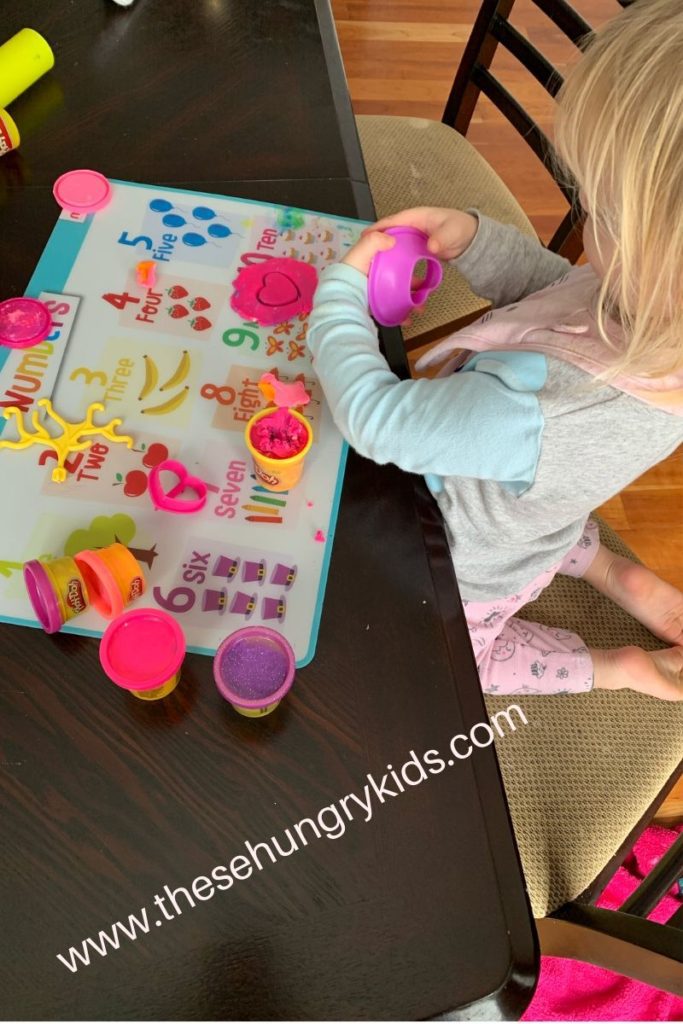
Here are some things your child may learn through sensory play:
Cause and effect
I poured water on the sand and now it is wet.
I buried the toy and now I can’t see it.
I poured water from a big container to a little container, and it spilled out.
Mathematics
Only 5 pom poms fit in this small container, but 15 fit in the large one.
When I pour the water from the large container to the small container, it makes it look like there is more water in the small container. However, the amount of water remained the same.
Problem Solving
I don’t have enough play-doh to build a big tower. I will have to add more.
When I dump rice from this big bowl into the little bowl, it overflows. I will need to scoop less rice.
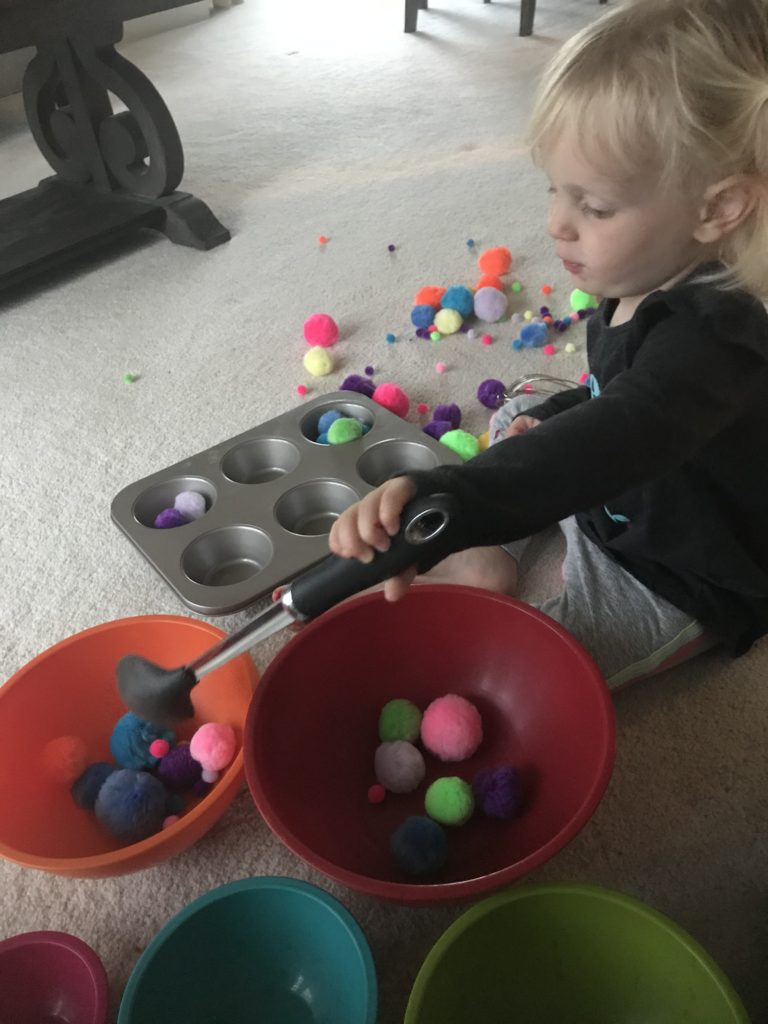
Why make sensory bins?
The goal with a sensory bin is to allow your child open-ended play to explore and learn however they need to.
Sensory bins are a fun activity. I keep an activity bin of supplies ready for whenever I need to make one!
If your children have busy brains like mine, sensory bins are a great way to engage with your child. I pay attention to the way they play, the questions they ask, and what holds their interest the longest.
What about sensory bags and bottles?
I’ve found that sensory bags and bottles are great for small babies, but not so great for toddlers and preschoolers. They don’t seem to hold their attention as long.
An easy sensory bag my daughter loved as an infant was a few drops of paint in a freezer bag. She loved squishing it around to mix the colors!
How do you deal with the mess of sensory play?
I totally let my kids take the reins with sensory bins. And you’ll have to accept from the start that there will be a mess.
And mess is OK! Let them get messy and dirty. Let them smell, taste, feel, smush, dump, scoop, and explore the bin. It may not look like it, but they’re exercising their brains.
I repeat over and over again in my head, “everything is ok. This is not an emergency. It can easily be cleaned. They are having fun.”
Now, it drives my husband nuts to watch them play with sensory bins. But I feel that the benefits definitely outweigh the mess!
A few tips for easier cleanup:
- Play with sensory bins in a high chair to keep the mess contained
- If the weather is nice, play with your sensory bin outdoors and clean off with the hose after
- Some sensory bins are best done in the bathtub! Edible paints, for example, can be easily rinsed down the drain.
- Place the bin in a small, plastic kiddie pool that can be dumped afterwards
- Purchase a plastic, reusable tablecloth for sensory play
How to create the perfect sensory bin
Sensory bins can be easily customized to your child’s interests! Is there something he or she has been into lately? Throw it in the bin.
For our sensory bins, I like to find a small container, a filler, and then small objects to fill the bin with. These objects usually correspond with something we’ve been talking about, or something that my kids are interested in.
Small figurines are some of my favorite toys. We use mini dinosaurs, Frozen characters, animals, and sea creatures a lot.
I also give my kids different scoops, tweezers, droppers, spoons, paint brushes…you name it!
Making sensory bins for babies or small toddlers
When making a sensory bin for younger children, I try to make them with things that are taste-safe.
For example, raw rice and beans are not appropriate, but cooked rice, cereal, and other edible fillers are a great place to start.
I also make sure that the figurines I use are not small enough to choke on.
Sometimes something as simple as water with bowls and spoons is enough to keep a baby busy!
Some of our favorite sensory bins are:
Pom-pom sensory bin:
Pom poms of different colors and sizes and a muffin tin or nesting bowls to sort them in. I give my daughters spoons, tweezers, cups, and other things to scoop and transfer the pom-poms.
Dinosaur dig sensory bin:
Rice and mini dinosaurs are all this bin requires! I give my kids forks to “rake” the rice off the dinos, spoons to scoop them out, and paint brushes to carefully brush the rice off the dinosaurs. They like to sort them into cupcake tins.
Oatmeal sensory bins:
Raw oatmeal and cooking utensils is all my daughter wants with this bin! She likes to pretend to cook, stir, and scoop the oatmeal. She’s made me many mugs of “oatmeal coffee!”
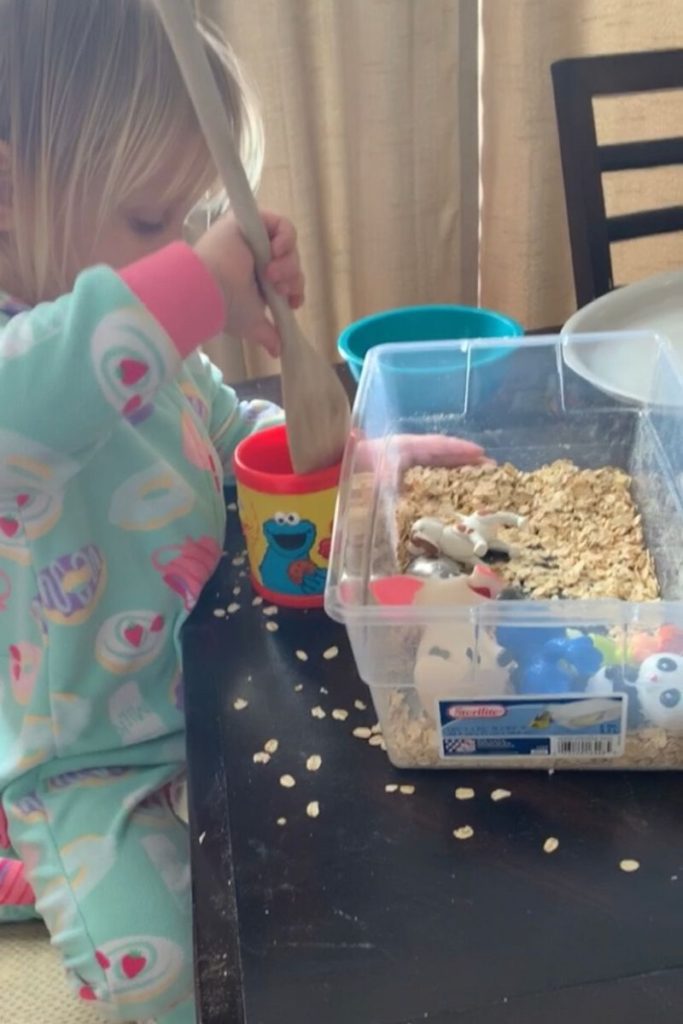
Try some sensory play with your toddler or baby today! I think you’ll be surprised at how happy and engaged they are.
I post a lot of our sensory play ideas on my Facebook and Instagram, so follow along to join the fun!
